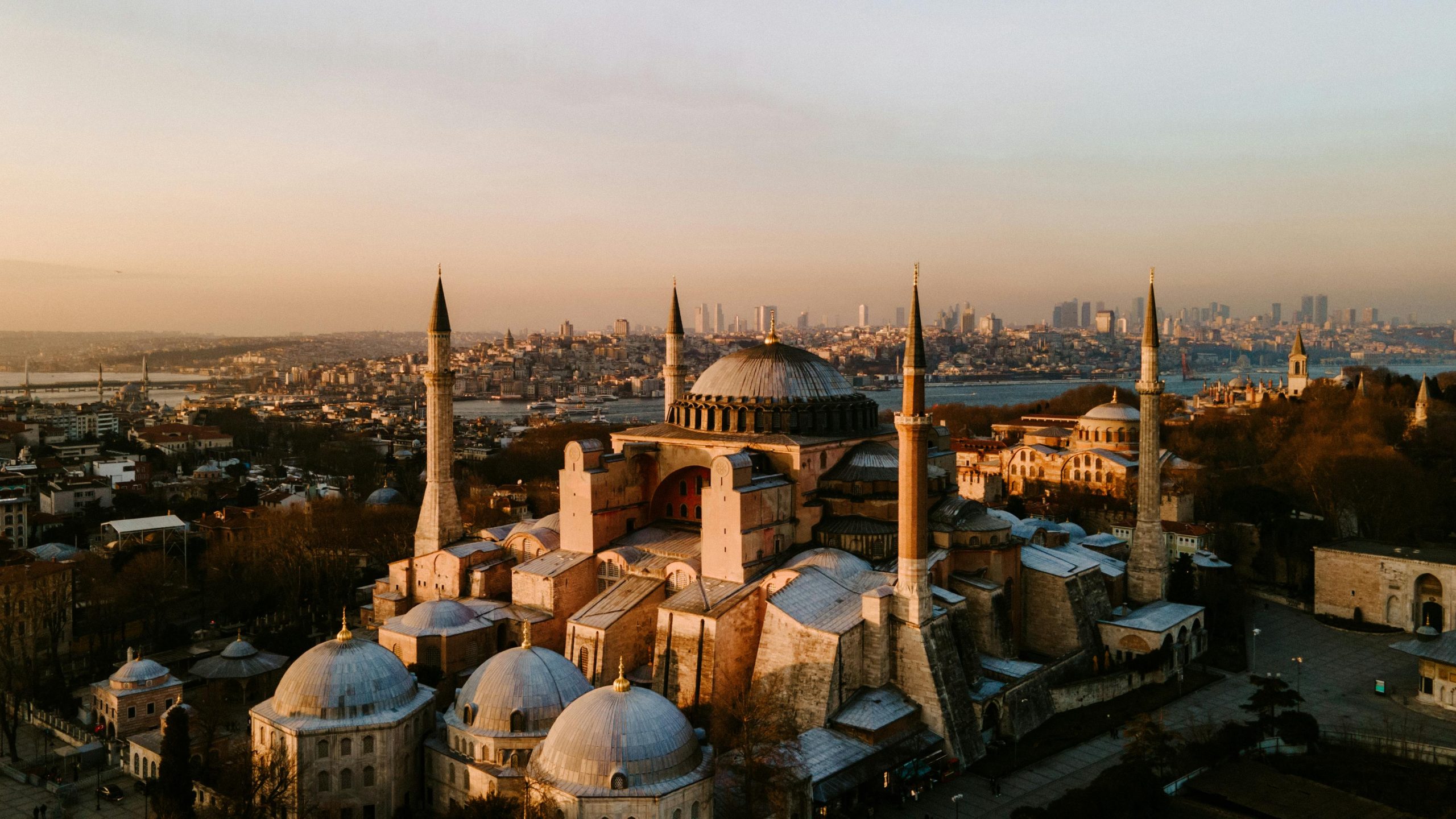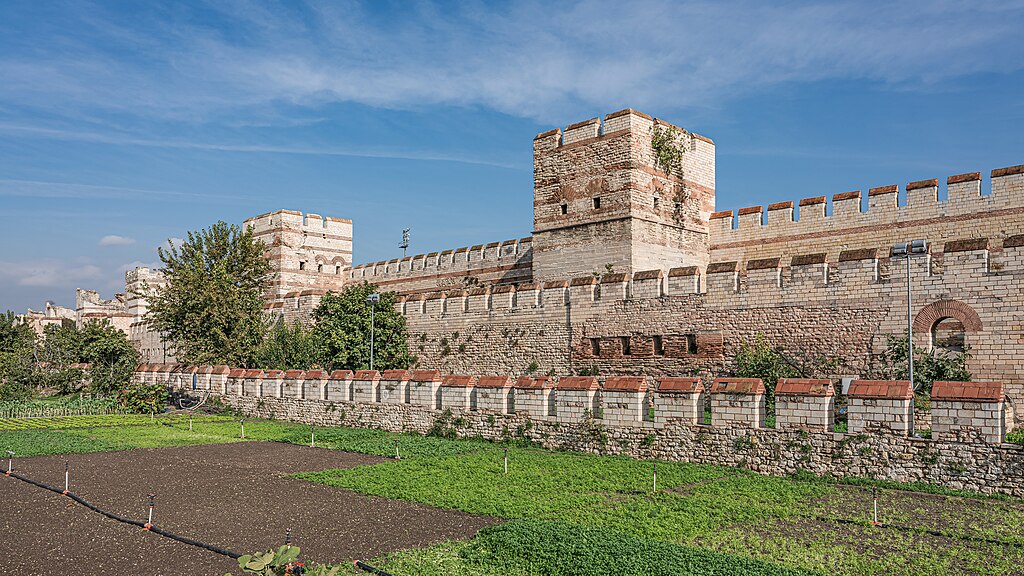Walled Obelisk, Istanbul
Historic Site in Istanbul

At the southern end of Sultanahmet Square, the former Hippodrome of Constantinople, stands a monument that has watched empires flourish and fade — the Walled Obelisk. Rising 32 meters high, this massive stone pillar is one of the oldest surviving structures in Istanbul and one of the top sights in Istanbul for history lovers tracing the city's Byzantine legacy. Its rough masonry contrasts sharply with the more polished Egyptian Obelisk nearby, yet its endurance tells a story of time, triumph, and transformation.
Today, the Walled Obelisk forms part of one of the best places to visit in Istanbul, surrounded by the city's most iconic landmarks — Hagia Sophia, the Blue Mosque, and the German Fountain all lie within a short stroll. Often visited on walking tours of Istanbul, it's a stop that reveals how the city layers its history, century over century, stone upon stone.
History and Significance of the Walled Obelisk
The exact origins of the Walled Obelisk remain unclear, but it likely dates to the late Roman or early Byzantine period. What is known is that Emperor Constantine VII Porphyrogenitus (r. 913–959) ordered a major reconstruction of the monument in the 10th century. During this renovation, it was built from large blocks of rough-cut stone and decorated with gilded bronze plaques depicting military victories of his grandfather, Emperor Basil I. The obelisk once gleamed brilliantly in the sunlight, crowned by a gilded bronze sphere.
Tragically, the Fourth Crusade of 1204 brought destruction to much of Constantinople, and the Walled Obelisk's bronze plaques were looted and melted down for their metal. Later, in Ottoman times, young Janissaries used the monument as a climbing challenge, leaving behind marks of their rough games. Despite these centuries of wear, the Walled Obelisk endures as a powerful symbol of the city's long and layered history — a testament to the continuity of Istanbul through turmoil and time.
Things to See and Do at the Walled Obelisk
While the Walled Obelisk itself cannot be entered or climbed, its location within Sultanahmet Square makes it easy to explore as part of a broader visit to the area's many historical monuments. The obelisk's massive stone blocks bear visible scars and weathering that speak of the centuries it has endured. Take a slow walk around its base to appreciate its proportions and consider how it once stood gleaming with bronze under the Byzantine sun.
Nearby, you can visit the Egyptian Obelisk — older still, brought from Luxor in the 4th century — as well as the Serpent Column and the German Fountain. Together, these monuments form the open-air museum of the ancient Hippodrome, once the beating heart of Constantinople's social and political life. The square today remains lively, filled with street musicians, families, and travelers pausing to admire this rare concentration of world history.
How to Get There
The Walled Obelisk stands at the southern end of Sultanahmet Square in Istanbul's historic district. It's easily reached by public transport via the T1 tram line, stopping at Sultanahmet station just a few minutes' walk away. For visitors arriving by train, Sirkeci railway station is around 15 minutes on foot from the square. You can use the official TCDD Taşımacılık website to check schedules, compare routes, and purchase tickets for Turkey's national and regional trains operated by TCDD. For a more streamlined experience (especially if you prefer an English interface or want to compare across countries), we recommend using Omio, which allows you to easily compare prices, schedules, and book train tickets across Turkey and the rest of Europe — all in one place. For those driving, parking near Sultanahmet is limited, but several paid parking lots can be found around Cankurtaran and Kennedy Avenue. If you are looking to rent a car in Turkey I recommend having a look at Discover Cars, first, as they compare prices and review multiple car rental agencies for you.
Practical Tips on Visiting the Walled Obelisk
- Best time to visit the Walled Obelisk: Early morning or sunset for the best light and fewer crowds.
- Entrance fee in Euros: Free.
- Opening hours: Accessible at all times as part of Sultanahmet Square.
- Official website: Not applicable.
- How long to spend: Around 15–20 minutes, longer if exploring nearby landmarks.
- Accessibility: Fully accessible via paved walkways.
- Facilities: Benches, rest areas, and cafés within Sultanahmet Square.
- Photography tip: Capture the obelisk with the Blue Mosque or Hagia Sophia in the background for striking compositions.
- Guided tours: Included in most Old City walking tours.
- Nearby food options: Traditional Turkish restaurants and street vendors along the square.
Is the Walled Obelisk worth visiting?
Yes. While it might not dazzle with ornamentation, the Walled Obelisk represents Istanbul's deep continuity — a survivor of emperors, crusades, and centuries of change. As one of the last standing monuments of the Hippodrome, it provides context for the city's ancient roots and offers a tangible link to Byzantium's imperial past. It's a quiet yet essential stop for anyone exploring Istanbul's layered history.
FAQs for Visiting the Walled Obelisk
Can I climb the Walled Obelisk?
No, the monument is for viewing only and cannot be climbed.
Is there an entrance fee?
No, it's completely free and located in a public square.
Is it illuminated at night?
Yes, soft lighting makes it visible and atmospheric after dark.
How old is the Walled Obelisk?
Its origins date to late antiquity, with major reconstruction in the 10th century under Emperor Constantine VII.
Can I visit it together with other attractions?
Absolutely — it's within walking distance of Hagia Sophia, the Blue Mosque, and the Egyptian Obelisk.
Nearby Attractions to the Walled Obelisk
- Egyptian Obelisk – The ancient monument from Luxor, Egypt, dating back over 3,000 years.
- Serpent Column – A bronze relic from Delphi commemorating a Greek victory over Persia.
- Hagia Sophia – The awe-inspiring Byzantine cathedral and Ottoman mosque nearby.
- Blue Mosque – The city's iconic 17th-century mosque facing Sultanahmet Square.
- German Fountain – A late 19th-century neo-Byzantine pavilion gifted by Kaiser Wilhelm II.
The Walled Obelisk appears in our Complete Guide to Visiting Istanbul!
This website uses affiliate links which may earn a commission at no additional cost to you!
Visiting Walled Obelisk
Accessible at all times as part of Sultanahmet Square.
Free
Nearby Attractions
- Serpent Column (0.0) km
Historic Site in Istanbul - Obelisk of Theodosius (0.1) km
Historic Site in Istanbul - Turkish and Islamic Arts Museum (0.1) km
Museum in Istanbul - Sultanahmet Square (0.1) km
Square in Istanbul - Blue Mosque (0.2) km
Mosque in Istanbul - German Fountain (0.2) km
Fountain in Istanbul - Great Palace Mosaics Museum (0.3) km
Museum in Istanbul - Arasta Bazaar (0.3) km
Bazaar in Istanbul - Theodosius Cistern (0.3) km
Historic Site in Istanbul - Boukoleon Palace (0.3) km
Palace in Istanbul


